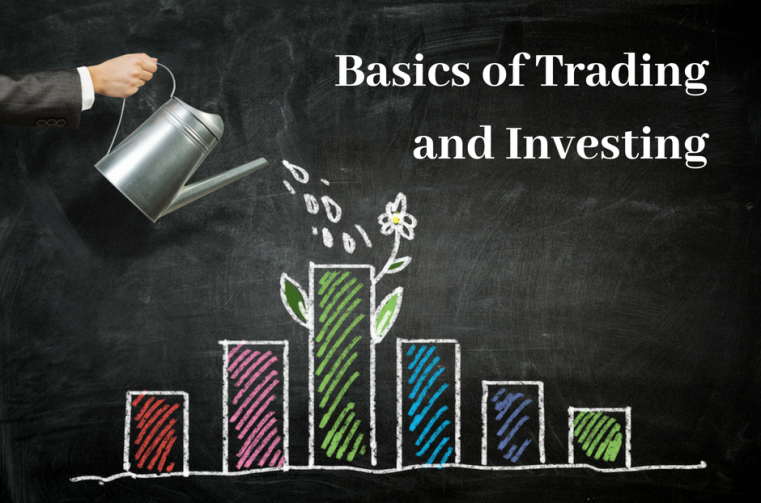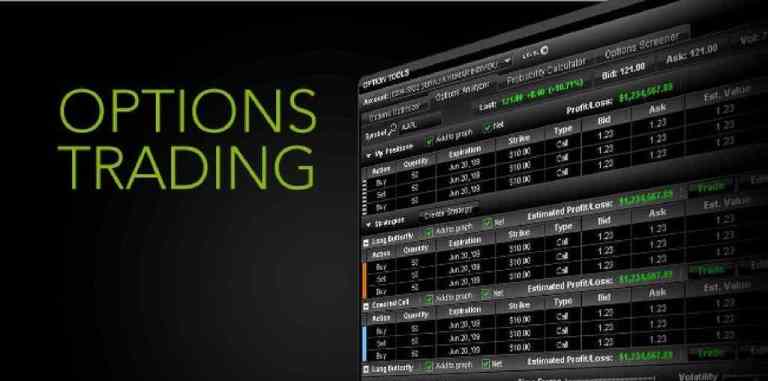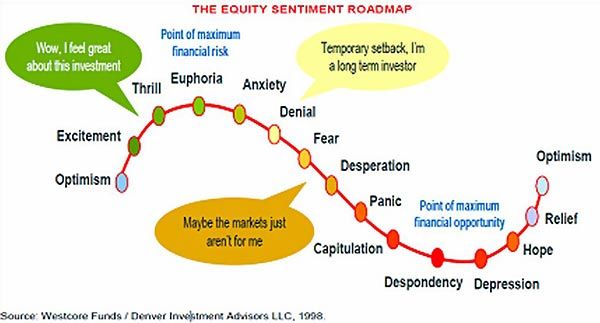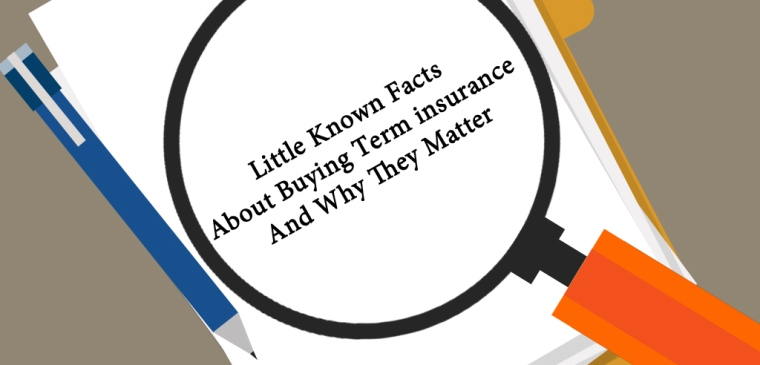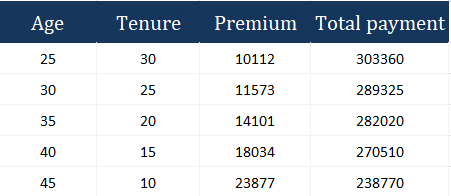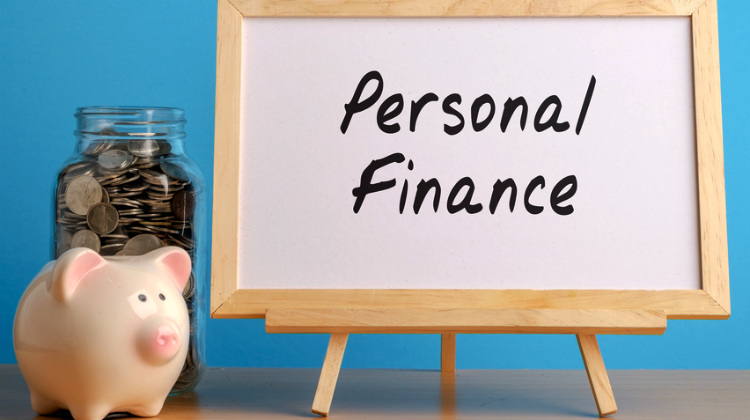This is a time when long term investing should be done. If you have spare cash for long term, Equity is for you. But how do you do it? How do you choose them? What are the important things you should look at while buying shares for long term?

There are some key things we will have a look at today, these are the key ratios discussed in book Profitable Investment in Shares, by S.S Grewal and Navjot Grewal.
But, before reading them understand that they are ratios which good indication of share prospects and are not guarantee about share price rise in long term, Share markets always run on Emotions and perspective which can change anytime…
Also periodic review is necessary, just buying today and looking after 10 years is not the idea… Buying is always the first step, Periodic review is the next.
8 Ratios to look before buying a share
1. Ploughback and reserves
After deduction of all expenses, including taxes, the net profits of a company are split into two parts — dividends and ploughback.
Dividend is that portion of a company’s profits which is distributed to its shareholders, whereas ploughback is the portion that the company retains and gets added to its reserves.
The figures for ploughback and reserves of any company can be obtained by a cursory glance at its balance sheet and profit and loss account.
Ploughback is important because it not only increases the reserves of a company but also provides the company with funds required for its growth and expansion. All growth companies maintain a high level of ploughback. So if you are looking for a growth company to invest in, you should examine its ploughback figures.
Companies that have no intention of expanding are unlikely to plough back a large portion of their profits.
Reserves constitute the accumulated retained profits of a company. It is important to compare the size of a company’s reserves with the size of its equity capital. This will indicate whether the company is in a position to issue bonus shares.
As a rule-of-thumb, a company whose reserves are double that of its equity capital should be in a position to make a liberal bonus issue.
Retained profits also belong to the shareholders. This is why reserves are often referred to as shareholders’ funds. Therefore, any addition to the reserves of a company will normally lead to a corresponding an increase in the price of your shares.
The higher the reserves, the greater will be the value of your shareholding. Retained profits (ploughback) may not come to you in the form of cash, but they benefit you by pushing up the price of your shares.
2. Book value per share
You will come across this term very often in investment discussions. Book value per share indicates what each share of a company is worth according to the company’s books of accounts.
The company’s books of account maintain a record of what the company owns (assets), and what it owes to its creditors (liabilities). If you subtract the total liabilities of a company from its total assets, then what is left belongs to the shareholders, called the shareholders’ funds.
If you divide shareholders’ funds by the total number of equity shares issued by the company, the figure that you get will be the book value per share.
Book Value per share = Shareholders’ funds / Total number of equity shares issued
The figure for shareholders’ funds can also be obtained by adding the equity capital and reserves of the company.
Book value is a historical record based on the original prices at which assets of the company were originally purchased. It doesn’t reflect the current market value of the company’s assets.
Therefore, book value per share has limited usage as a tool for evaluating the market value or price of a company’s shares. It can, at best, give you a rough idea of what a company’s shares should at least be worth.
The market prices of shares are generally much higher than what their book values indicate. Therefore, if you come across a share whose market price is around its book value, the chances are that it is under-priced. This is one way in which the book value per share ratio can prove useful to you while assessing whether a particular share is over- or under-priced.
3. Earnings per share (EPS)
EPS is a well-known and widely used investment ratio. It is calculated as:
Earnings Per Share (EPS) = Profit After Tax / Total number of equity shares issued
This ratio gives the earnings of a company on a per share basis. In order to get a clear idea of what this ratio signifies, let us assume that you possess 100 shares with a face value of Rs.10 each in XYZ Ltd. Suppose the earnings per share of XYZ Ltd. is Rs.6 per share and the dividend declared by it is 20 per cent, or Rs 2 per share.
This means that each share of XYZ Ltd. earns Rs 6 every year, even though you receive only Rs 2 out of it as dividend.
The remaining amount, Rs 4 per share, constitutes the ploughback or retained earnings. If you had bought these shares at par, it would mean a 60 per cent return on your investment, out of which you would receive 20 per cent as dividend and 40 per cent would be the ploughback.
This ploughback of 40 per cent would benefit you by pushing up the market price of your shares. Ideally speaking, your shares should appreciate by 40 per cent from Rs 10 to Rs 14 per share.
This illustration serves to drive home a basic investment lesson. You should evaluate your investment returns not on the basis of the dividend you receive, but on the basis of the earnings per share. Earnings per share is the true indicator of the returns on your share investments.
Suppose you had bought shares in XYZ Ltd at double their face value, i.e. at Rs 20 per share. Then an EPS of Rs 6 per share would mean a 30 per cent return on your investment, of which 10 per cent (Rs 2 per share) is dividend and 20 per cent (Rs 4 per share), the ploughback.
Under ideal conditions, ploughback should push up the price of your shares by 20 per cent, i.e. from Rs 20 to 24 per share. Therefore, irrespective of what price you buy a particular company’s shares at its EPS will provide you with an invaluable tool for calculating the returns on your investment.
4. Price earnings ratio (P/E)
The price earnings ratio (P/E) expresses the relationship between the market price of a company’s share and its earnings per share:
Price/Earnings Ratio (P/E) = Price of the share / Earnings per share
This ratio indicates the extent to which earnings of a share are covered by its price. If P/E is 5, it means that the price of a share is 5 times its earnings. In other words, the company’s EPS remaining constant, it will take you approximately five years through dividends plus capital appreciation to recover the cost of buying the share. The lower the P/E, lesser the time it will take for you to recover your investment.
P/E ratio is a reflection of the market’s opinion of the earnings capacity and future business prospects of a company. Companies which enjoy the confidence of investors and have a higher market standing usually command high P/E ratios.
For example, blue chip companies often have P/E ratios that are as high as 20 to 60. However, most other companies in India have P/E ratios ranging between 5 and 20.
On the face of it, it would seem that companies with low P/E ratios would offer the most attractive investment opportunities. This is not always true. Companies with high current earnings but dim future prospects often have low P/E ratios.
Obviously such companies are not good investments, notwithstanding their P/E ratios. As an investor your primary concern is with the future prospects of a company and not so much with its present performance. This is the main reason why companies with low current earnings but bright future prospects usually command high P/E ratios.
To a great extent, the present price of a share, discounts, i.e. anticipates its future earnings.
All this may seem very perplexing to you because it leaves the basic question unanswered: How does one use the P/E ratio for making sound investment decisions?
The answer lies in utilizing the P/E ratio in conjunction with your assessment of the future earnings and growth prospects of a company. You have to judge the extent to which its P/E ratio reflects the company’s future prospects.
If it is low compared to the future prospects of a company, then the company’s shares are good for investment. Therefore, even if you come across a company with a high P/E ratio of 25 or 30 doesn’t summarily reject it because even this level of P/E ratio may actually be low if the company is poised for meteoric future growth.
On the other hand, a low P/E ratio of 4 or 5 may actually be high if your assessment of the company’s future indicates sharply declining sales and large losses.
5. Dividend and yield
There are many investors who buy shares with the objective of earning a regular income from their investment. Their primary concern is with the amount that a company gives as dividends — capital appreciation being only a secondary consideration. For such investors, dividends obviously play a crucial role in their investment calculations.
It is illogical to draw a distinction between capital appreciation and dividends. Money is money — it doesn’t really matter whether it comes from capital appreciation or from dividends.
A wise investor is primarily concerned with the total returns on his investment — he doesn’t really care whether these returns come from capital appreciation or dividends, or through varying combinations of both. In fact, investors in high tax brackets prefer to get most of their returns through long-term capital appreciation because of tax considerations.
Companies that give high dividends not only have a poor growth record but often also poor future growth prospects. If a company distributes the bulk of its earnings in the form of dividends, there will not be enough ploughback for financing future growth.
On the other hand, high growth companies generally have a poor dividend record. This is because such companies use only a relatively small proportion of their earnings to pay dividends. In the long run, however, high growth companies not only offer steep capital appreciation but also end up paying higher dividends.
On the whole, therefore, you are likely to get much higher total returns on your investment if you invest for capital appreciation rather than for dividends.
Watch this video to know more detailed information about dividend and yield :
In short, it all boils down to whether you are prepared to sacrifice a part of your immediate dividend income in the expectation of greater capital appreciation and higher dividends in the years to come and the whole issue is basically a trade-off between capital appreciation and income.
Investors are not really interested in dividends but in the relationship that dividends bear to the market price of the company’s shares. This relationship is best expressed by the ratio called yield or dividend yield:
Yield = (Dividend per share / market price per share) x 100
Yield indicates the percentage of return that you can expect by way of dividends on your investment made at the prevailing market price. The concept of yield is best clarified by the following illustration.
Let us suppose you have invested Rs 2,000 in buying 100 shares of XYZ Ltd at Rs 20 per share with a face value of Rs 10 each.
If XYZ announces a dividend of 20 per cent (Rs.2 per share), then you stand to get a total dividend of Rs 200. Since you bought these shares at Rs 20 per share, the yield on your investment is 10 per cent (Yield = 2/20 x 100). Thus, while the dividend was 20 per cent; but your yield is actually 10 per cent.
The concept of yield is of far greater practical utility than dividends. It gives you an idea of what you are earning through dividends on the current market price of your shares.
Average yield figures in India usually vary around 2 per cent of the market value of the shares. If you have a share portfolio consisting of shares belonging to a large number of both high-growth and high-dividend companies, then on an average your dividend in-come is likely to be around 2 per cent of the total market value of your portfolio.
6. Return on Capital Employed (ROCE), and
7. Return on Net Worth (RONW)
While analyzing a company, the most important thing you would like to know is whether the company is efficiently using the capital (shareholders’ funds plus borrowed funds) entrusted to it.
While valuing the efficiency and worth of companies, we need to know the return that a company is able to earn on its capital, namely its equity plus debt. A company that earns a higher return on the capital it employs is more valuable than one which earns a lower return on its capital. The tools for measuring these returns are:
1. Return on Capital Employed (ROCE), and
2. Return on Net Worth (RONW).
Return on Capital Employed and Return on Net Worth (shareholders’ funds) are valuable financial ratios for evaluating a company’s efficiency and the quality of its management. The figures for these ratios are commonly available in business magazines, annual reports and economic newspapers and financial Web sites.
Return on capital employed
Return on capital employed (ROCE) is best defined as operating profit divided by capital employed (net worth plus debt).
The figure for operating profit is arrived at after adding back taxes paid, depreciation, extraordinary one-time expenses, and deducting extraordinary one-time income and other income (income not earned through mainline operations), to the net profit figure.
The operating profit of a company is a better indicator of the profits earned by it than is the net profit.
ROCE thus reflects the overall earnings performance and operational efficiency of a company’s business. It is an important basic ratio that permits an investor to make inter-company comparisons.
Return on net worth
Return on net worth (RONW) is defined as net profit divided by net worth. It is a basic ratio that tells a shareholder what he is getting out of his investment in the company.
ROCE is a better measure to get an idea of the overall profitability of the company’s operations, while RONW is a better measure for judging the returns that a shareholder gets on his investment.
The use of both these ratios will give you a broad picture of a company’s efficiency, financial viability and its ability to earn returns on shareholders’ funds and capital employed.
8. PEG ratio
PEG is an important and widely used ratio for forming an estimate of the intrinsic value of a share. It tells you whether the share that you are interested in buying or selling is under-priced, fully priced or over-priced.
For this you need to link the P/E ratio discussed earlier to the future growth rate of the company. This is based on the assumption that the higher the expected growth rate of the company, the higher will be the P/E ratio that the company’s share commands in the market.
The reverse is equally true. The P/E ratio cannot be viewed in isolation. It has to be viewed in the context of the company’s future growth rate. The PEG is calculated by dividing the P/E by the forecasted growth rate in the EPS (earnings per share) of the company.
As a broad rule of the thumb, a PEG value below 0.5 indicates a very attractive buying opportunity, whereas a selling opportunity emerges when the PEG crosses 1.5, or even 2 for that matter.
The catch here is to accurately calculate the future growth rate of earnings (EPS) of the company. Wide and intensive reading of investment and business news and analysis, combined with experience will certainly help you to make more accurate forecasts of company earnings.
